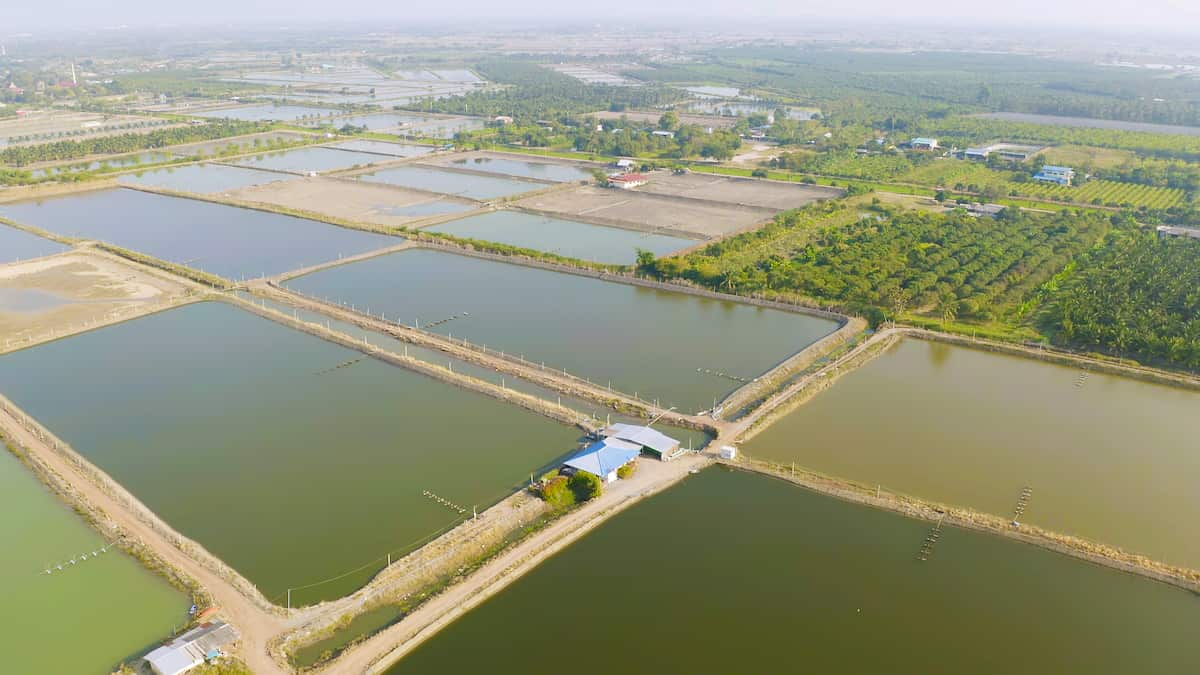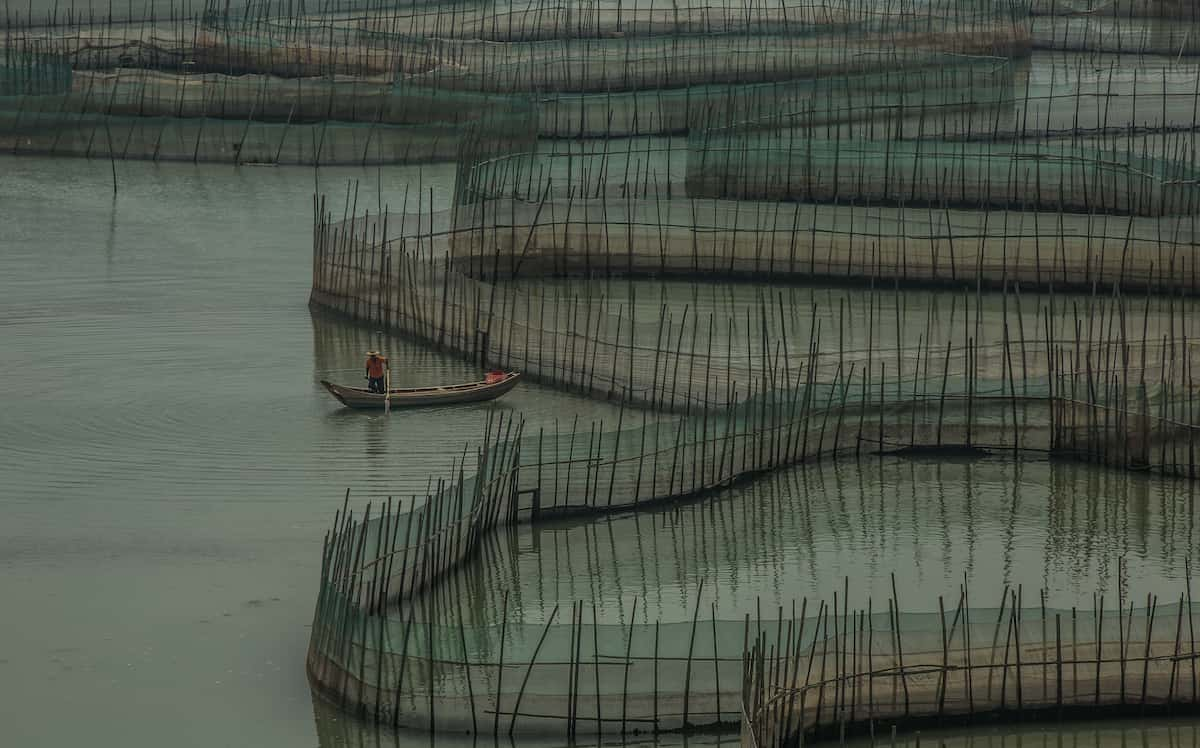Prawn and shrimp farming has become increasingly popular due to the high demand for these seafood products worldwide. Building a prawn/shrimp pond is the first and most crucial step in starting a successful prawn/shrimp farm. The process involves several steps, from site selection to pond construction, water management, stocking, feeding, and disease management.

In this process, attention to detail is crucial as every step can affect the final yield and profitability of the prawn/shrimp farm.
How to Build Prawn/Shrimp Pond in 6 Steps
Site Selection and Pond Design
The first step in building a prawn/shrimp pond is to choose an appropriate site. The ideal site should have a good water source, a gentle slope for easy drainage, and be located away from pollution. Once you have found a suitable site, you can start designing the pond. The design should consider the type of prawn/shrimp species you plan to farm, the pond size, and the water depth. You can consult with an aquaculture expert or use available resources online to help with the design.
Pond Construction
Once you have a design, the next step is to start constructing the pond. You must excavate the site, remove any unwanted material, and level the area. You can then start building the pond walls, which can be made of concrete, bricks, or soil. You should ensure that the walls are strong enough to withstand the pressure of the water.
The next step is installing a liner or membrane to prevent seepage. You can choose from different materials, including PVC, HDPE, and EPDM liners. Finally, you will need to install inlet and outlet pipes, which will be used to fill and drain the pond.
Water Management
Once the pond is constructed, you must manage the water quality to ensure optimal growth of prawns/shrimps. You must regularly monitor the pH, temperature, dissolved oxygen, and other water parameters. You can use water quality testing kits or hire an aquaculture expert to help you.
You will also need to provide aeration to ensure sufficient oxygen levels in the pond. Aeration can be provided using diffusers, paddlewheels, or blowers. Additionally, you will need to manage the water exchange in the pond to maintain the required water quality parameters. This can be done by adding or removing water from the pond.
Stocking the Pond
Once the pond is ready, and the water quality parameters are within the desired range, the next step is to stock the pond with prawns/shrimps. You can source the prawn/shrimp seeds from a reliable hatchery or a well-established farm.
In case you missed it: Top 10 Shrimp/Prawn Diseases: Symptoms, Causes, Prevention, and Control

The stocking density will depend on the prawn/shrimp species, pond size, and water quality parameters. Overstocking can lead to poor water quality, disease outbreaks, and stunted growth. You should regularly monitor the prawn/shrimp growth and adjust the feed and stocking density accordingly.
Feeding and Nutrition
Prawns/shrimps require a balanced diet for optimal growth and health. You can feed them with commercial feed containing essential nutrients such as protein, fat, vitamins, and minerals. The feed type and frequency depend on the prawn/shrimp species, size, and age. You should avoid overfeeding, as it can lead to poor water quality, disease outbreaks, and wastage of feed. Additionally, you can supplement the feed with natural food sources, such as algae, aquatic plants, and insects.
Disease Management
Disease outbreaks can cause significant losses in prawn/shrimp farms. You should monitor the pond regularly for signs of diseases, such as unusual behavior, abnormal growth, and discoloration. You can prevent diseases by maintaining good water quality, avoiding overstocking, and providing a balanced diet. You can also use prophylactic measures like vaccination and quarantine to prevent disease outbreaks. In case of a disease outbreak, you should consult an aquaculture expert and follow the recommended treatment protocols.
In case you missed it: Frequently Asked Questions About Shrimp/Prawn Farming

Another challenge is the social and economic impact of shrimp farming on local communities, including issues related to land use, displacement of traditional livelihoods, and labor practices. Overall, addressing these problems requires a comprehensive approach that balances environmental sustainability, social responsibility, and economic viability.
Conclusion
Building a prawn/shrimp pond is a complex process that requires careful planning, design, and construction. The pond should be constructed in a suitable location and designed to accommodate the needs of the prawn/shrimp species to be farmed. Water quality and management are crucial to the farm’s success, and regular monitoring and management are required.
- Feed Your Flock for Less: Top 10 Tips to Save on Chicken Feed
- Ultimate Guide to Ossabaw Island Hog: Breeding, Raising, Diet, and Care
- Hatching Answers: The Top 10 Reasons Your Chickens Aren’t Laying Eggs
- Eggs and Economics: Breaking Down the Cost of Raising Backyard Chickens
- Defend Your Greens: Proven Methods to Keep Iguanas Out of Your Garden
- Ultimate Guide to Cinnamon Queen Chicken: A Comprehensive Guide for Beginners
- Ultimate Guide to California Tan Chicken: Breeding, Raising, Diet, Egg-Production and Care
- Ultimate Guide to Marsh Daisy Chicken: Breeding, Raising, Diet, and Care
- 10 Types of Chicken Farming Businesses You Can Start for Profits